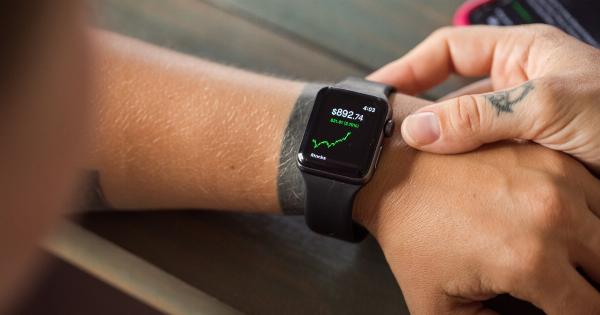Cancer is a complex disease that can affect various parts of the body, including the skin and nails.
While not all skin and nail changes are indicative of cancer, it is important to be aware of any unusual or persistent alterations that may warrant medical attention. Below are some visible indications of cancer on the skin and nails:.
1. Skin Changes:
One of the most common visible signs of cancer on the skin is the development of new moles or changes in existing moles. Melanoma, a type of skin cancer, often presents as a change in the color, shape, or size of a mole. Other warning signs may include:.
- A spot or sore that bleeds, crusts, or fails to heal
- Red, inflamed, or itchy patches on the skin
- A rough, scaly, or thickened area
- Unusual pigmentation or discoloration
- A lump or growth
If you notice any of these skin changes, it is crucial to consult a healthcare professional for a proper evaluation and diagnosis.
2. Nail Changes:
Certain types of cancer can also manifest through changes in the nails. These alterations may include:.
- Dark streaks or lines running vertically across the nail
- Changes in nail color, such as a brown or black discoloration
- Clubbing, where the fingertips become enlarged and the nails curve downward
- Brittle, thickened, or distorted nails
- Separation of the nail from the nail bed
While these nail changes can sometimes be attributed to factors other than cancer, it is essential to consult a medical professional to rule out any underlying health conditions.
Diabetes: Skin and Nail Symptoms
Diabetes is a chronic condition that affects the body’s ability to regulate blood sugar levels.
While it mainly manifests through symptoms like frequent urination, increased thirst, and unexplained weight loss, it can also lead to visible indications on the skin and nails.
1. Skin Symptoms:
Individuals with diabetes may experience the following skin symptoms:.
- Dry skin: Diabetes can cause dehydration, leading to dry and itchy skin.
- Darkened skin: Some people with diabetes may develop areas of darkened skin, commonly known as acanthosis nigricans. These patches are usually found in folds and creases, such as the neck, armpits, and groin.
- Slow healing wounds: High blood sugar levels can impair the body’s ability to heal wounds, making them heal more slowly.
- Skin infections: Diabetic individuals are more susceptible to fungal and bacterial infections, resulting in symptoms such as redness, swelling, and itching.
2. Nail Symptoms:
Diabetes can also impact the health of nails, causing the following symptoms:.
- Nail infections: Fungal infections are more common in individuals with diabetes, often leading to thickened nails, yellow discoloration, and brittle texture.
- Ingrown toenails: Poor circulation and nerve damage associated with diabetes can contribute to the development of ingrown toenails.
- Slow nail growth: In some cases, diabetes may slow down the growth of nails.
If you have diabetes and notice any concerning skin or nail symptoms, it is important to seek medical advice to manage your condition effectively.
Herpes: Skin and Nail Manifestations
Herpes is a viral infection caused by the herpes simplex virus (HSV). While it primarily affects the skin and mucous membranes, it can occasionally involve the nails as well:.
1. Skin Manifestations:
Herpes can cause the following visible indications on the skin:.
- Cold sores: HSV-1 is known for causing cold sores or fever blisters around the mouth. These are characterized by small, fluid-filled blisters that tend to crust over within a few days.
- Genital herpes: HSV-2 mainly affects the genital area, leading to the development of painful blisters or sores on the genitals and surrounding areas.
- Herpetic whitlow: This form of herpes can occur when the virus enters through a break in the skin, such as a cut or a hangnail. It typically affects the fingers and causes painful blisters or sores on the affected digit.
2. Nail Manifestations:
In rare instances, herpes can also affect the nails, causing the following symptoms:.
- Herpetic whitlow: When herpes affects the fingers, it can lead to painful blisters or sores around the nails.
- Inflammation and swelling: Nail herpes may cause redness, inflammation, and swelling of the surrounding nail bed.
- Discoloration: Herpes infection can also cause changes in nail color, such as a darkened or greenish hue.
If you suspect you may have herpes, it is crucial to consult a healthcare professional for proper diagnosis and appropriate management of the infection.
While the visible indications mentioned above can sometimes be associated with cancer, diabetes, or herpes, it is important to note that they can also be caused by various other factors.
Medical evaluation and diagnosis are necessary to determine the underlying cause and guide appropriate treatment. Regularly monitoring changes in the skin and nails and seeking professional advice when needed can help detect any potential health issues early on and facilitate timely intervention.































